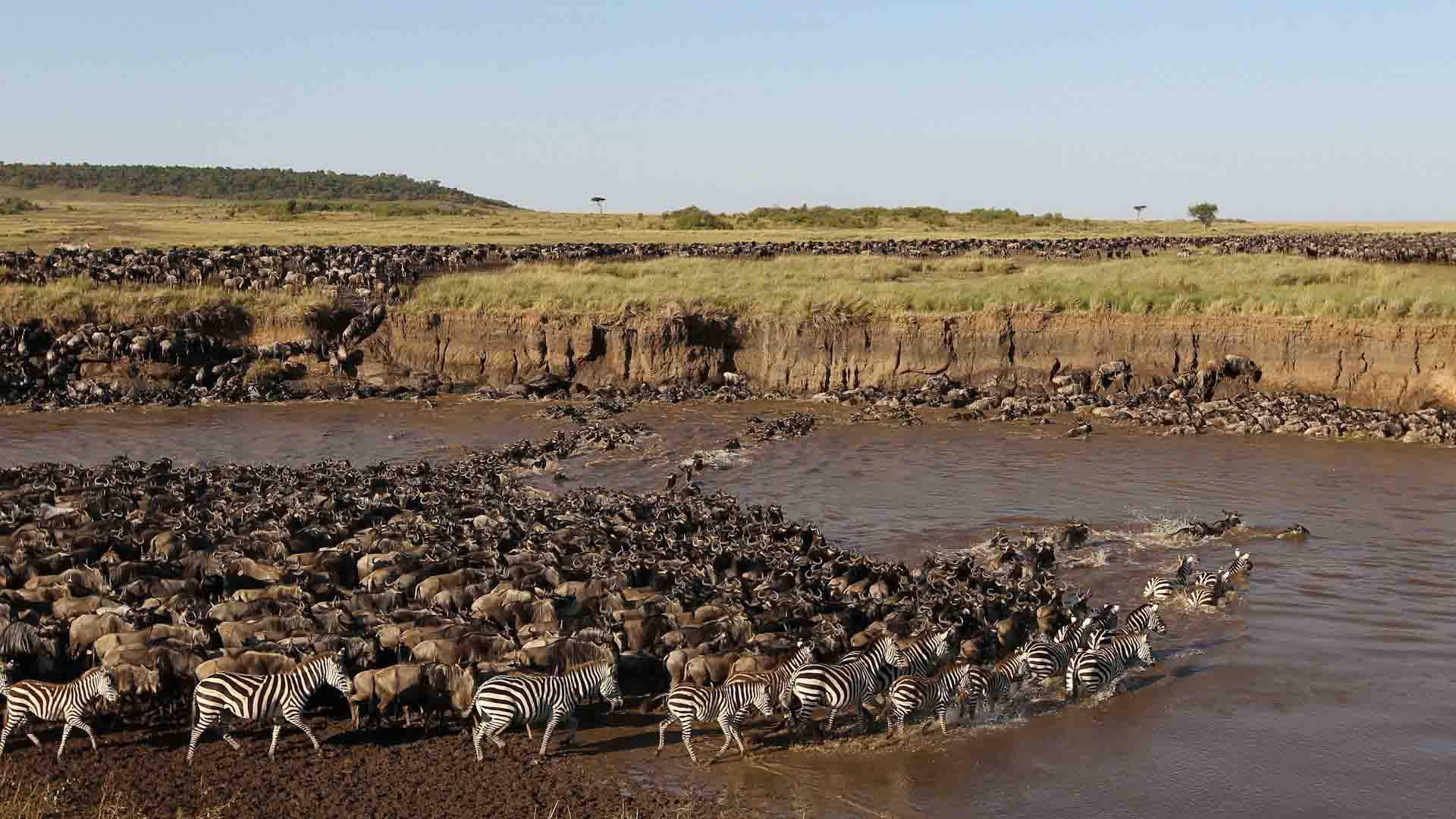The Serengeti is vast and beautiful; it’s one of Africa’s most captivating safari areas. The sheer amount of game here is amazing: estimates suggest up to about two million wildebeest, plus perhaps half a million zebra, hundreds of thousands of Thompson’s gazelle, and tens of thousands of impala, Grant’s gazelle, topi (tsessebe), hartebeest, eland and other antelope – all hunted by the predators for which these plains are famous.
Many of the wildebeest and zebra take part in the migration – an amazing spectacle that’s one of the greatest wildlife shows on earth. If you plan carefully, it’s still possible to witness this in wild and remote areas
Vast short-grass plains cover the south of Serengeti National Park, stretching into the north of Ngorongoro Conservation Area, the south-west Loliondo and Maswa Game Reserve. Occasionally there are small kopjes which, like the forests around Lake Ndutu, harbour good populations of resident game. However, around these oases of permanent wildlife, the majority of this area is flat and open. It’s alive with grazing wildebeest from around late-November to April, but can be very empty for the rest of the year.

